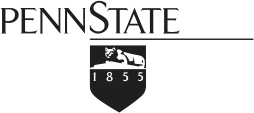Relational Causal Models (supported in part by grants from the National Science Foundation and the National Institutes of Health)
Most work on causal inference from observational data has assumed that the observations are independent and identically distributed. However, in many practical applications, the data exhibit relational dependencies. Relational causal models (RCM) allow us to model causal relationships in relational data. Our recent work has led to:
- A characterization of the properties of abstract ground graphs (AGG), which play a key role in the proofs of completeness of the only previous algorithm for learning relational causal models from data, we showed that AGG representation is not complete for relational d-separation, that is, there can exist conditional independence relations in an RCM that are not entailed by AGG (Lee et al., 2015).
- An investigation of Relational Causal Models (RCM) under relational counterparts of adjacency- faithfulness and orientation-faithfulness, yielding a simple approach to identifying a subset of relational d-separation queries needed for determining the structure of an RCM using d- separation against an unrolled DAG representation of the RCM. We provided theoretical underpinnings of a basis of a sound and efficient algorithm for learning the structure of an RCM from relational data. We introduced RCD-Light, a sound and efficient constraint-based algorithm that is guaranteed to yield a correct partially directed RCM structure with at least as many edges oriented as in that produced by RCD, the only other existing algorithm for learning RCM. We showed that unlike RCD, which requires exponential time and space, RCD- Light requires only polynomial time and space to orient the dependencies of a sparse RCM (Lee et al., 2016).
- A novel and elegant characterization of the Markov equivalence of RCMs under path semantics, an alternative to bridge-burning semantics used by RCD. We introduced a novel representation that allows us to efficiently determine whether an RCM is Markov equivalent to an-other. Under path semantics, we provide a sound and complete algorithm for recovering the structure of an RCM from conditional independence queries. Our analysis also suggests ways to improve the orientation recall of algorithms for learning the structure of RCM under bridge burning semantics as well (Lee et al., 2016, 2020).
Work in progress aims to further develop efficient algorithms for relational causal inference, learning of relational causal models, and their temporal, longitudinal, and spatio-temporal extensions.

